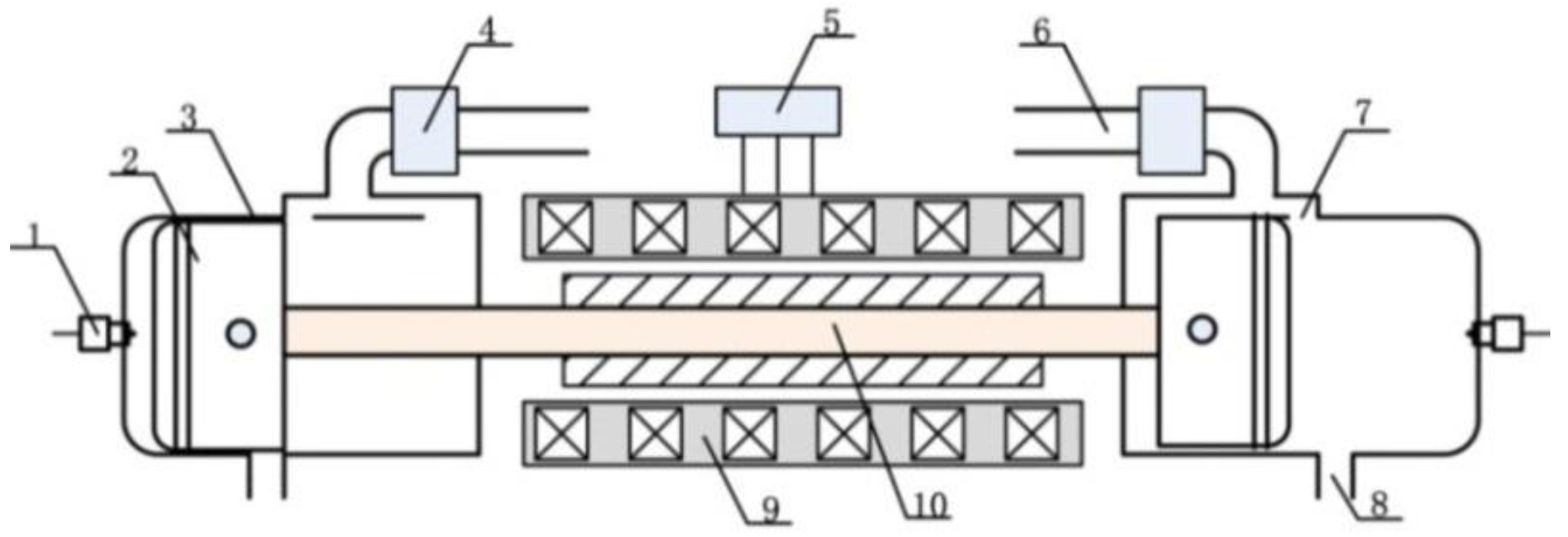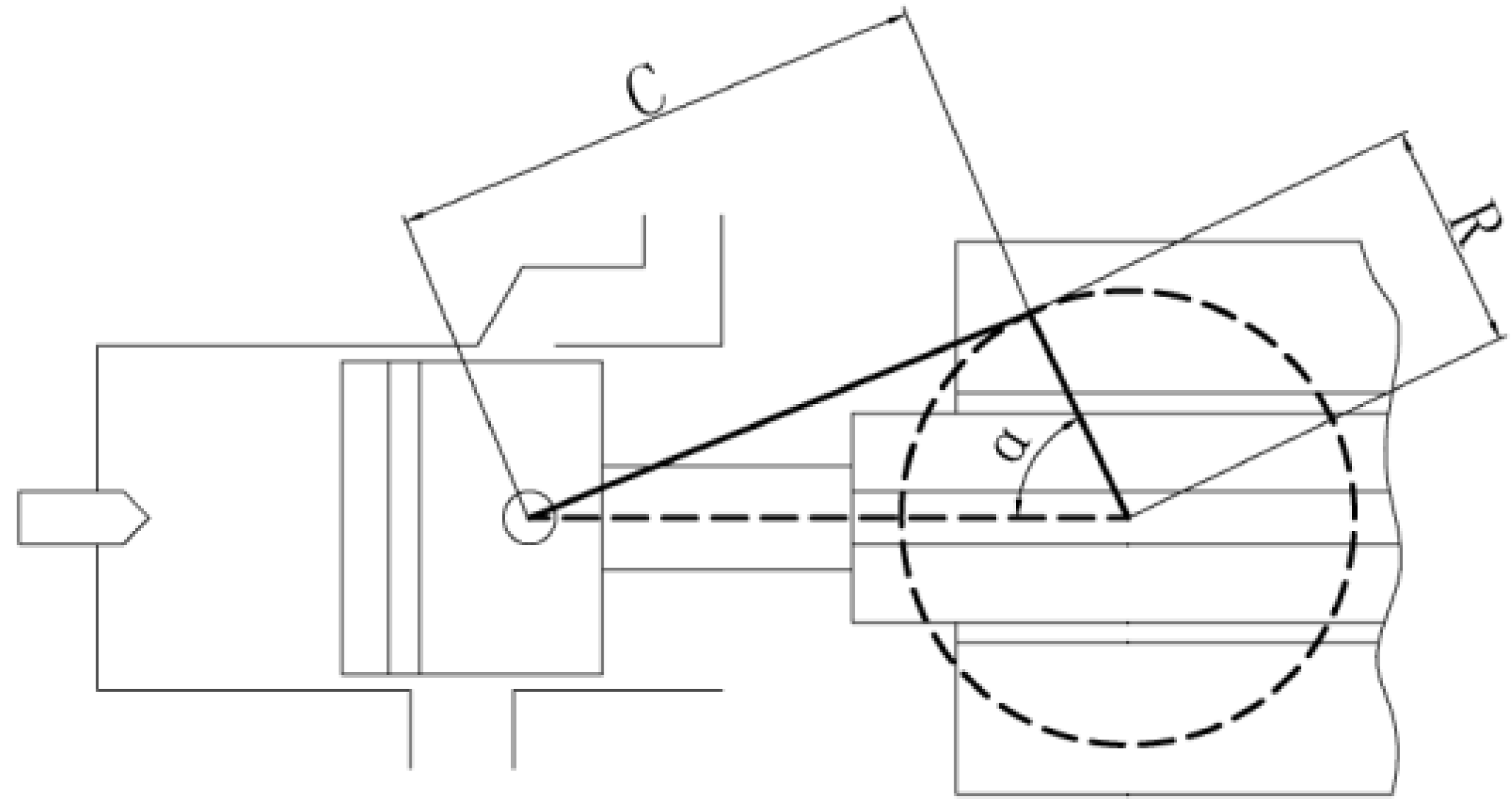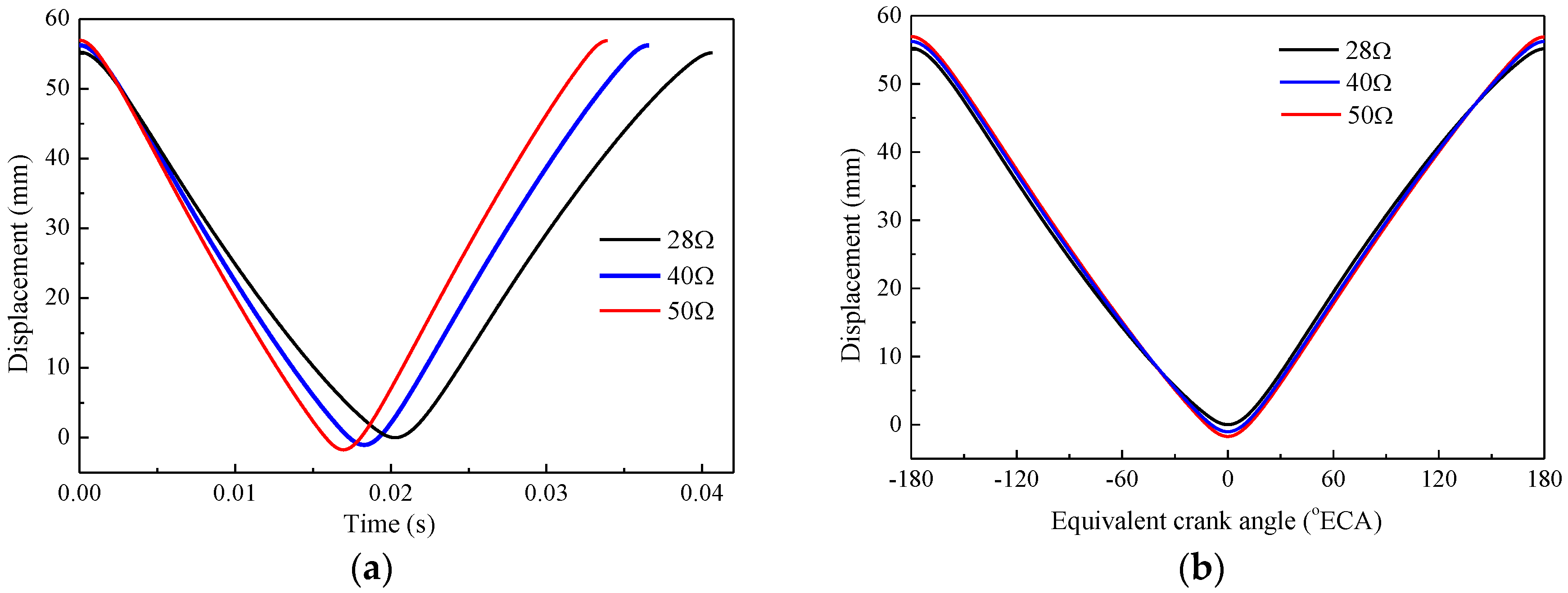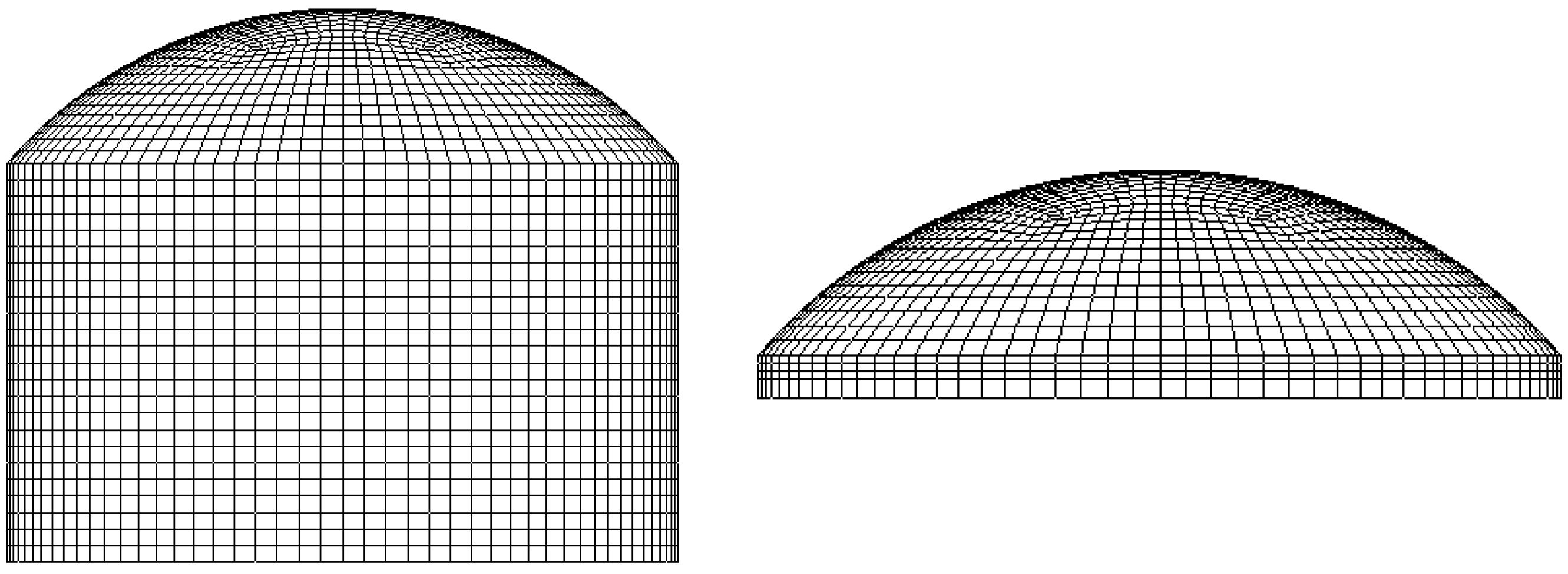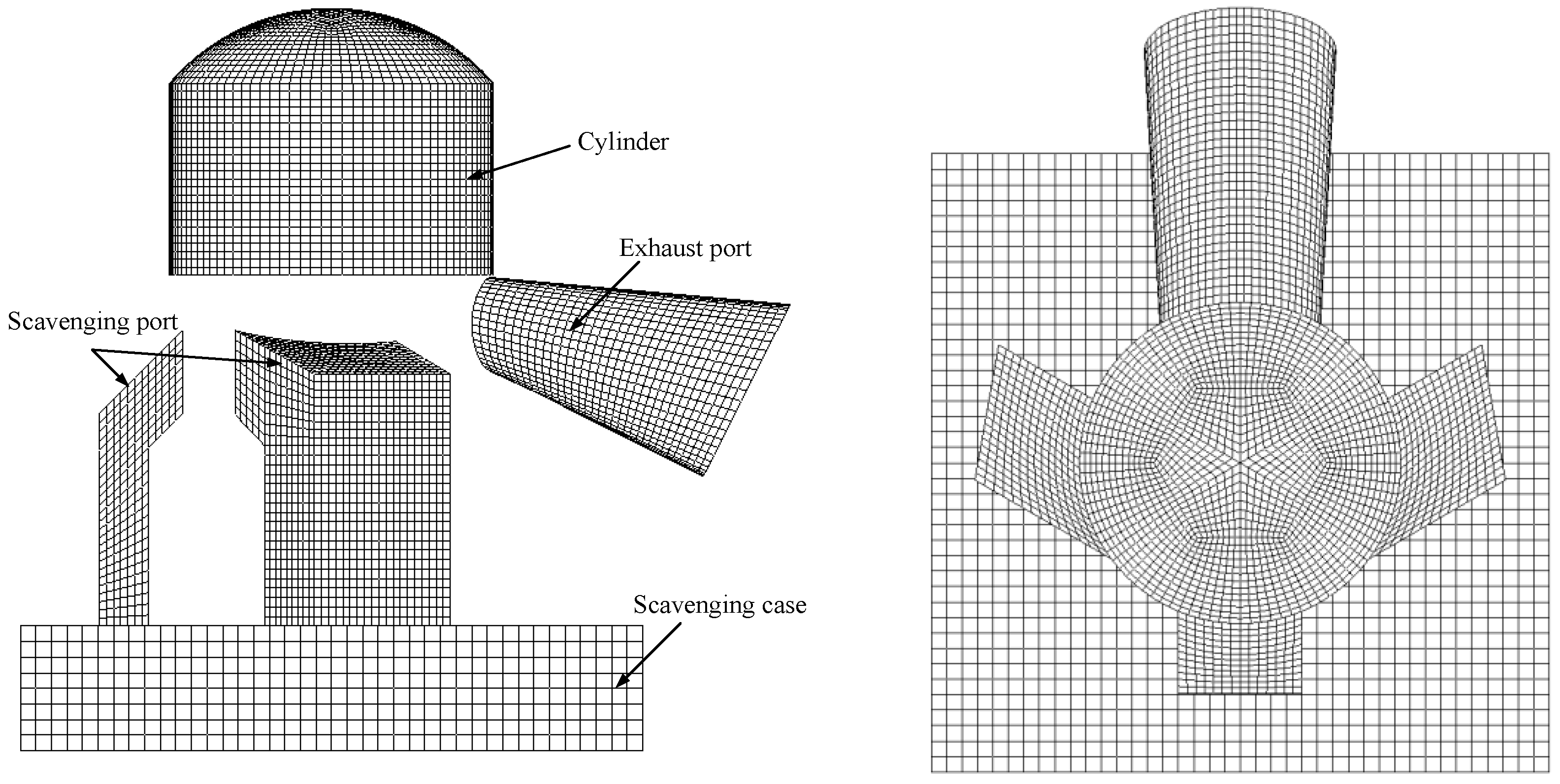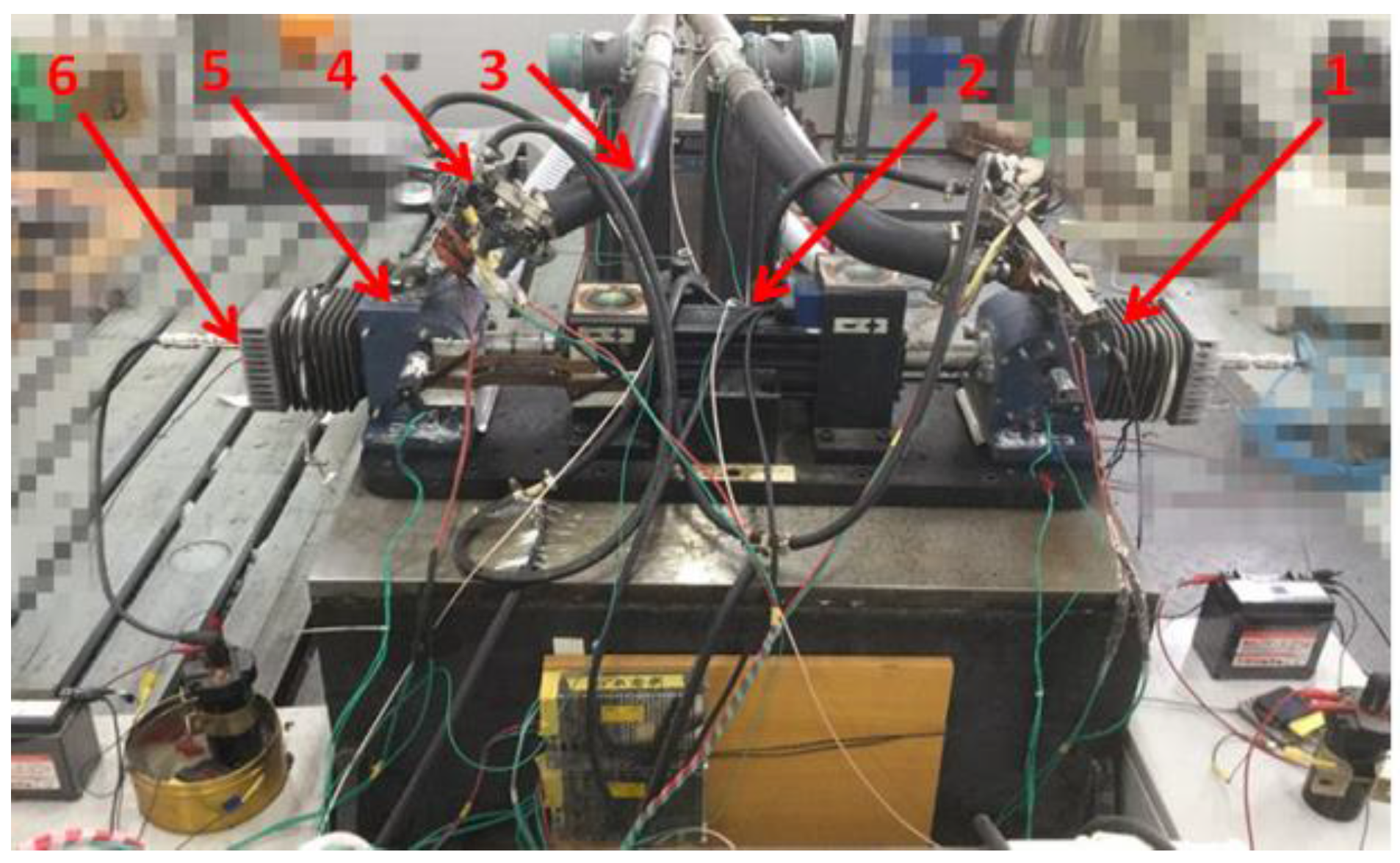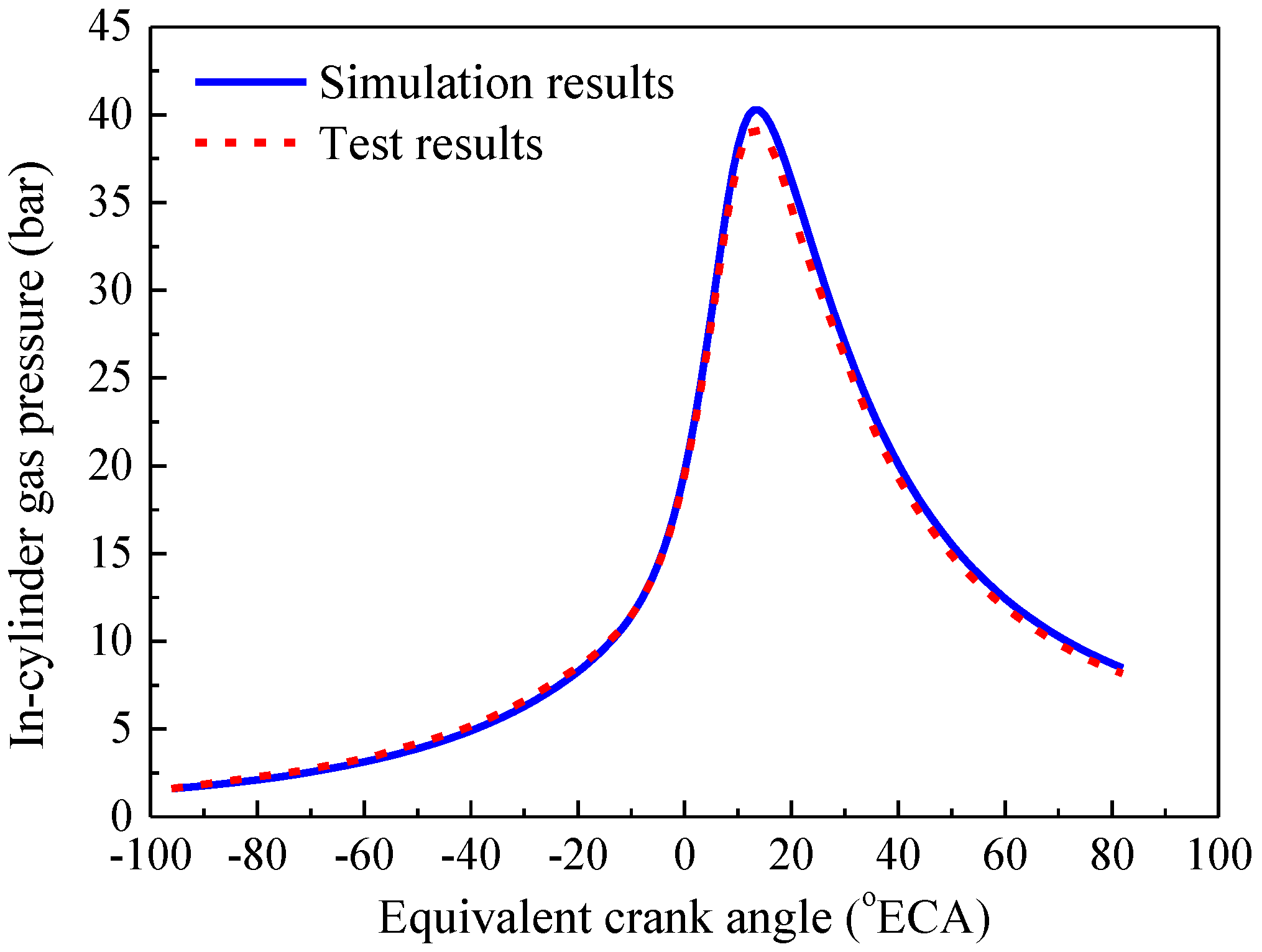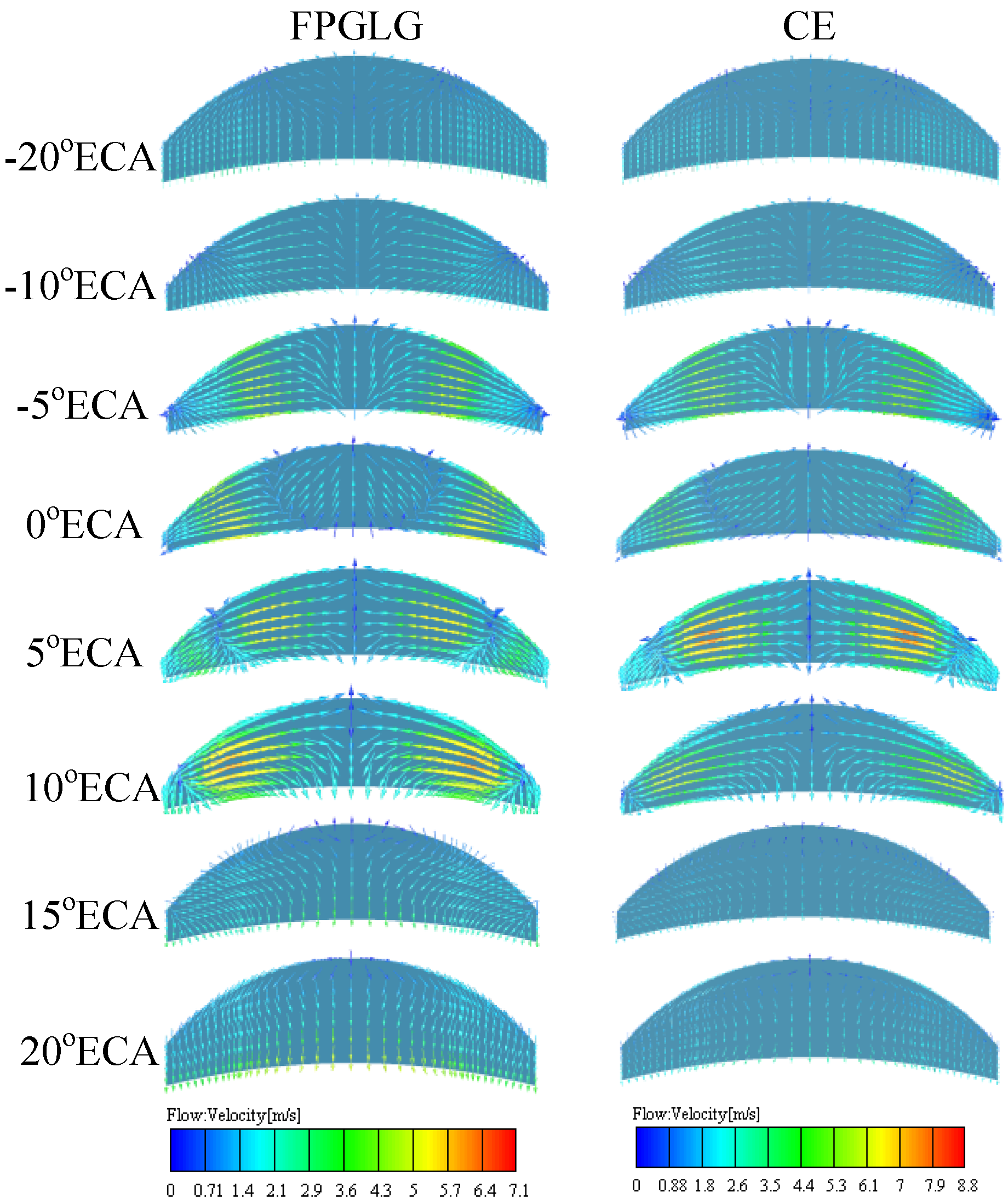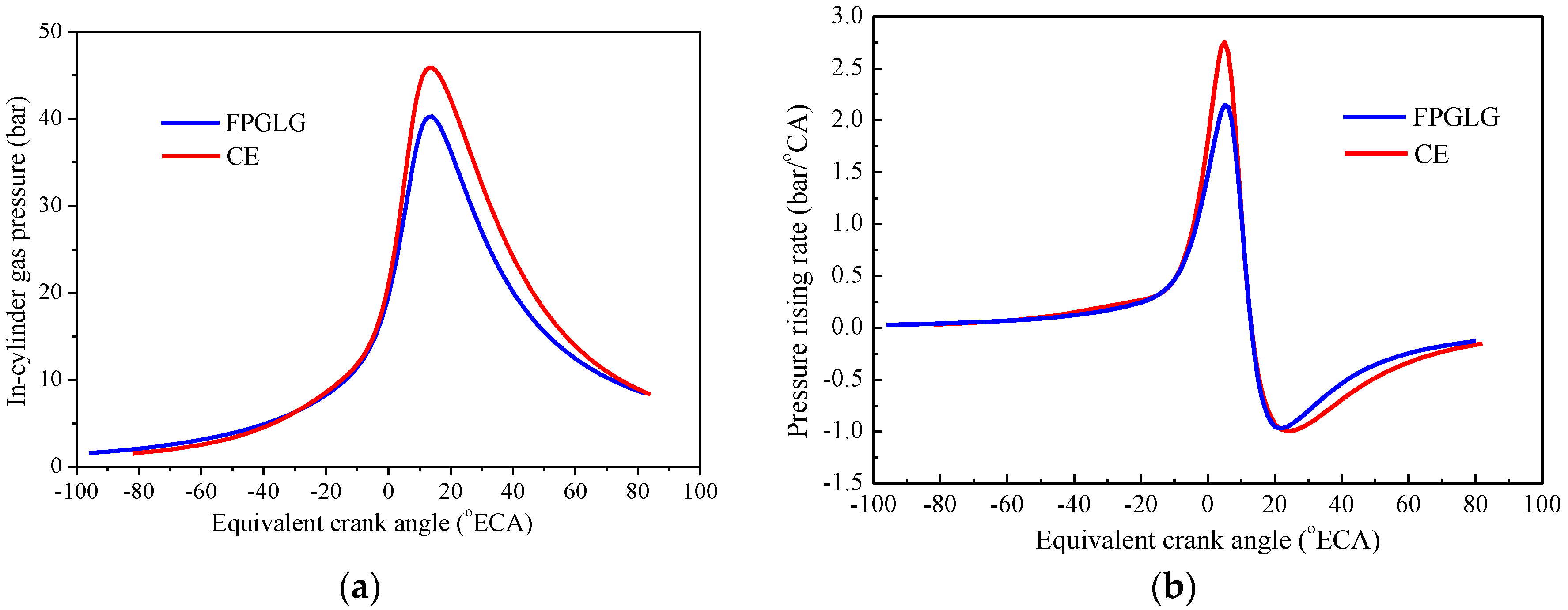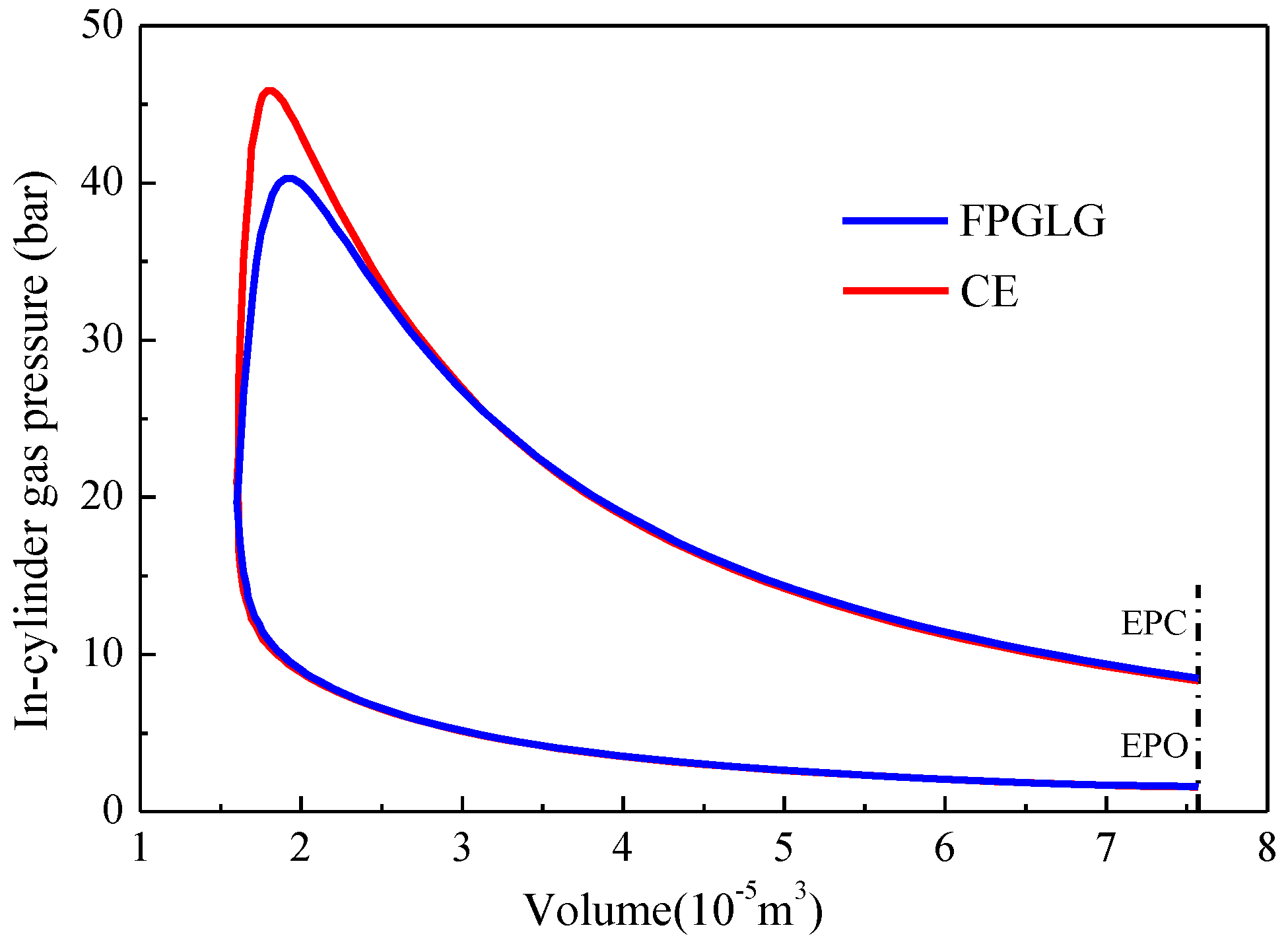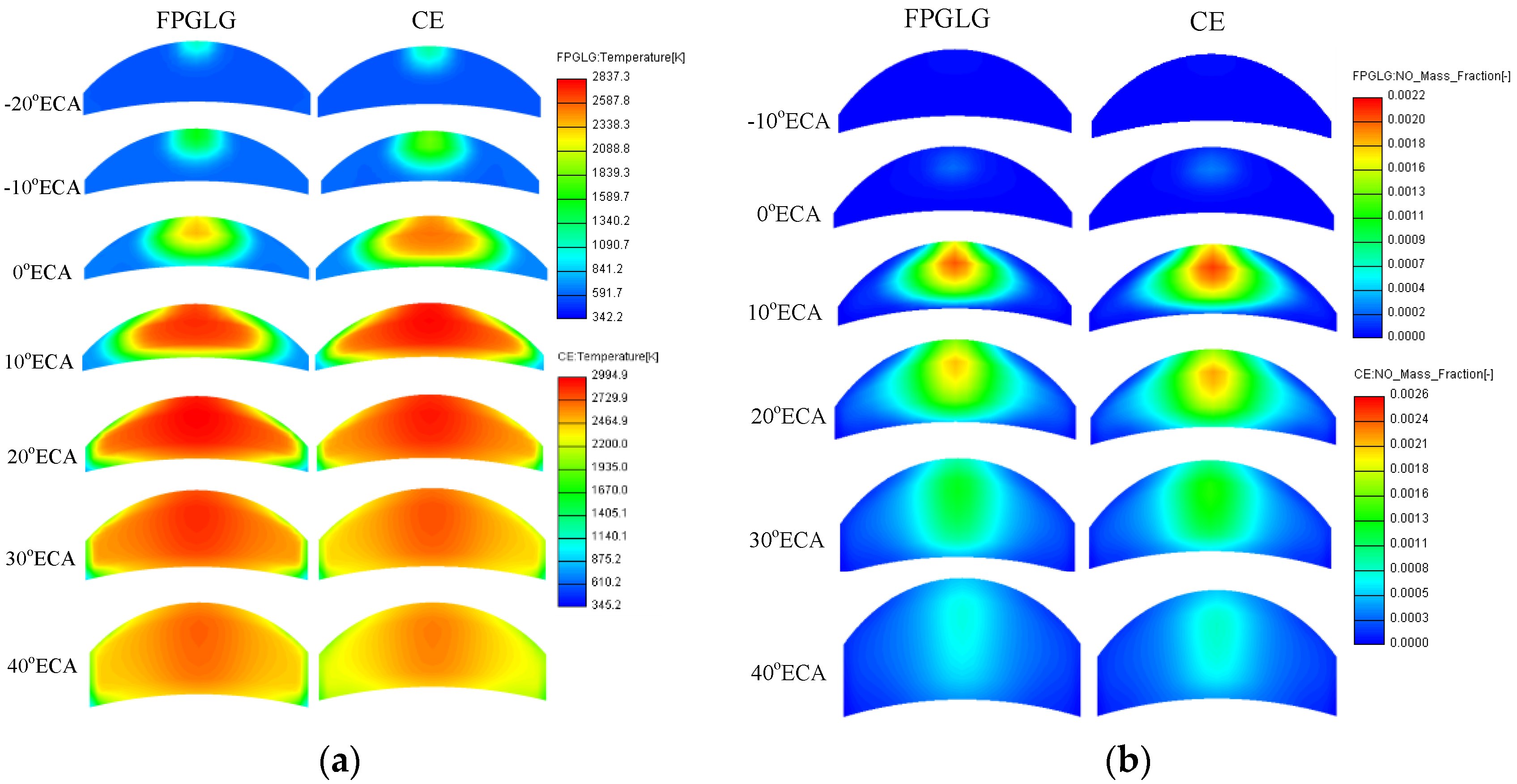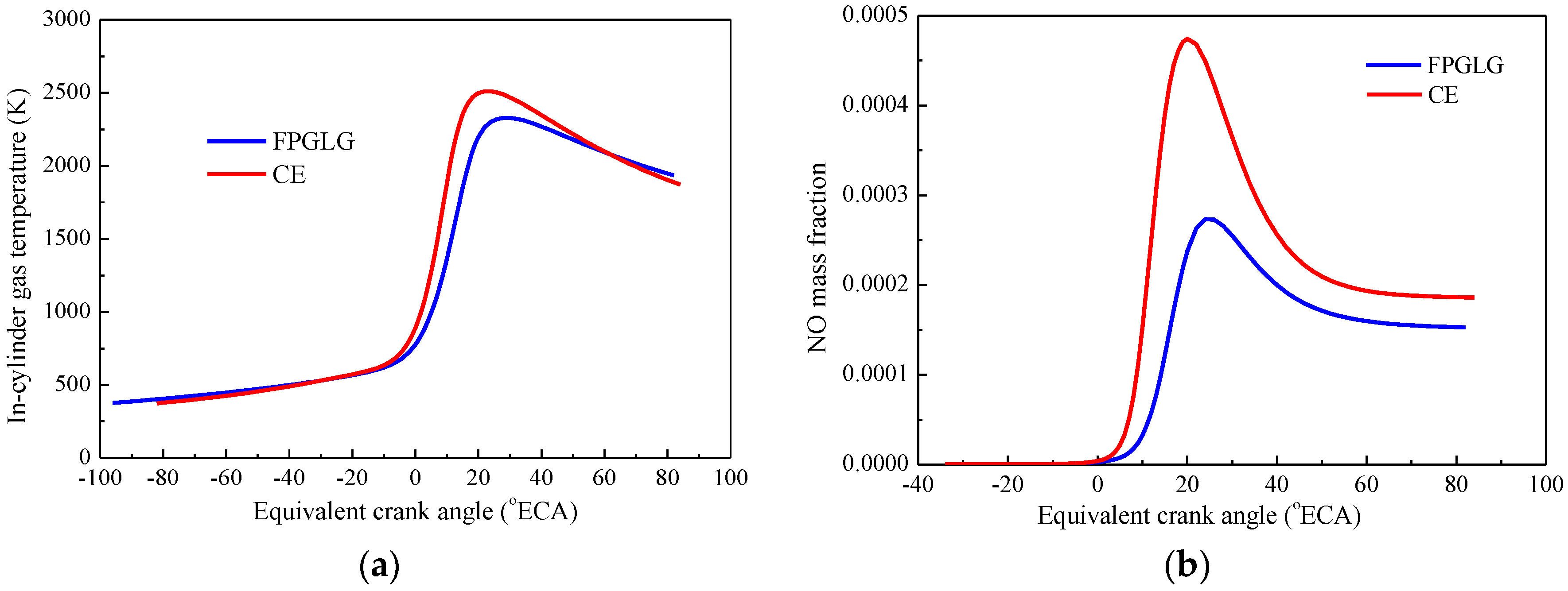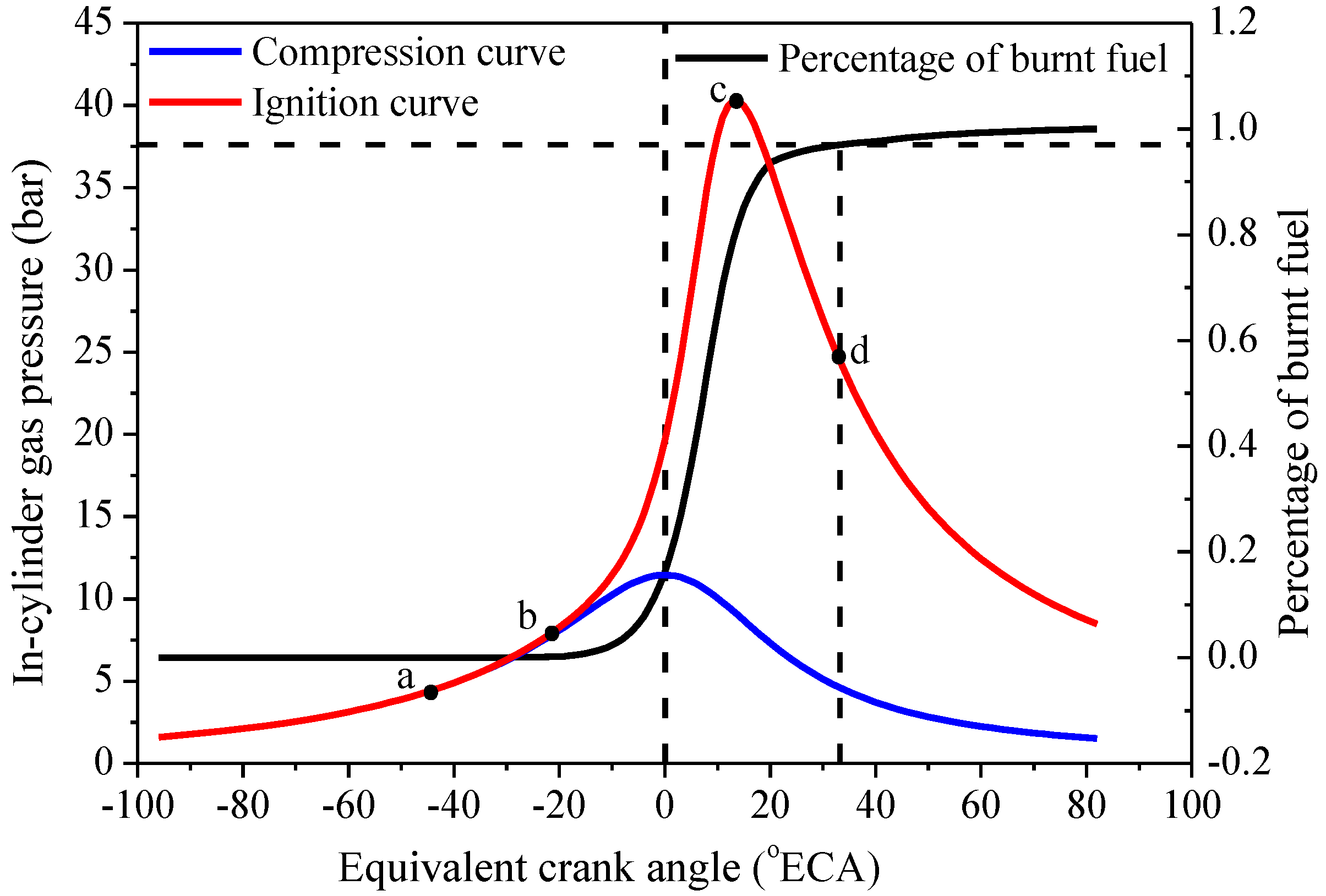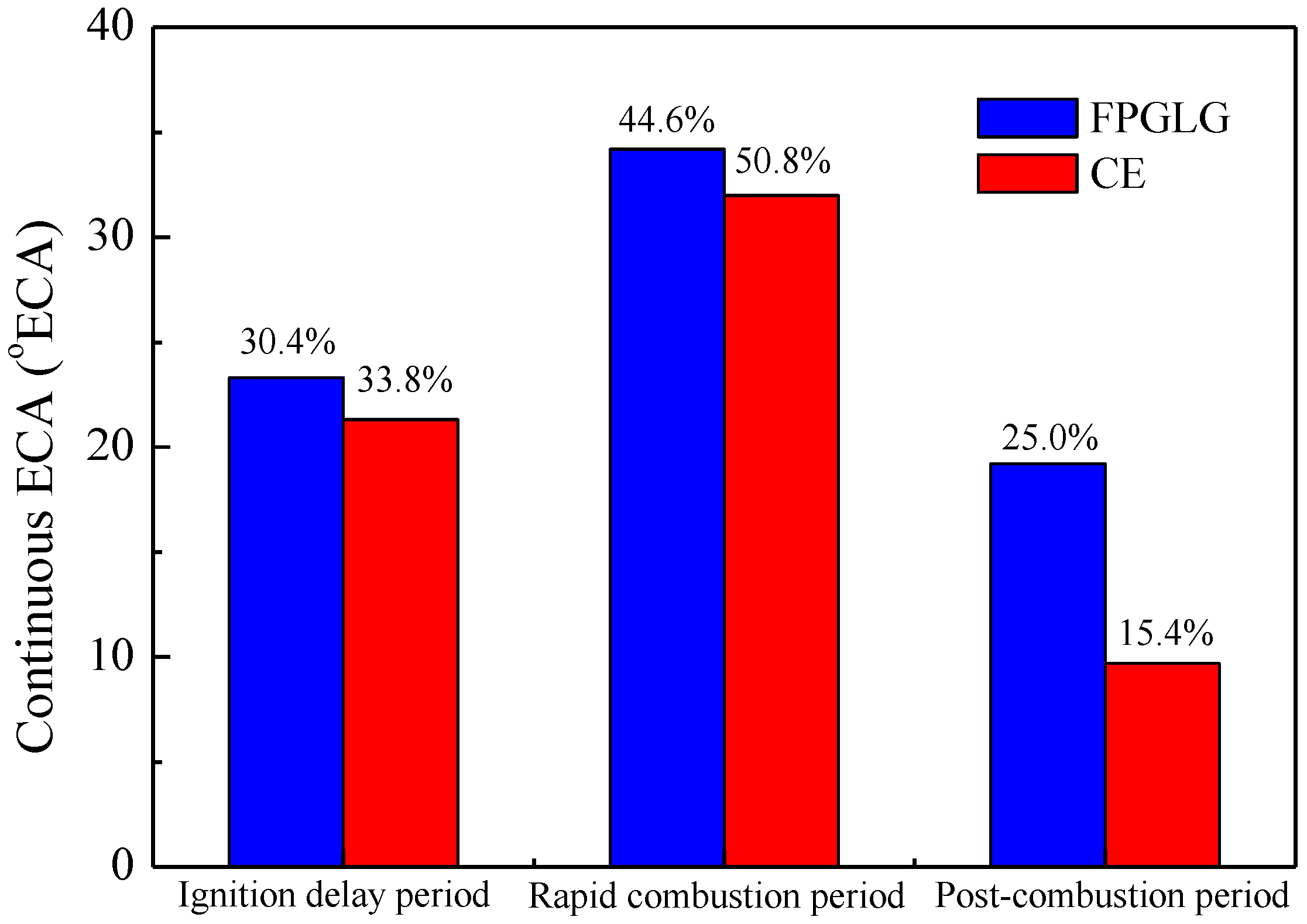1. Introduction
Because of the consumers’ demand for low fuel consumption and the stringent governmental emission legislation, researchers all over the world have been devoted to improving the technologies in the traditional internal combustion engine, as well as investigating new kinds of power machinery for energy conversion [
1,
2,
3,
4,
5]. The free-piston engine linear generator (FPLG), as one of the new energy conversion devices, has been widely studied due to its potential advantages of high efficiency, low emissions and multi-fuel capability over the conventional engines [
6]. The FPLG is a combination of free-piston engines and a linear generator. According to the amount of the piston and the arrangement form, it can be divided into three categories, that is the opposed piston free-piston engine, the single-cylinder free-piston engine and the dual piston free-piston engine [
7]. In this paper, the dual piston free-piston engine type was selected because of its higher power-to-weight ratio and the elimination of rebound devices. The schematic diagram of the FPLG prototype is shown in
Figure 1. The operating principle of the prototype can be described as follows: combustion occurs alternatively in the two chambers and drives the piston and the connecting rod reciprocating through the linear electric machine (LEM). In this way, the electric current is generated in the LEM’s coils, and part of the chemical energy of the fuel is converted into electricity.
The concept of the free-piston engine was first proposed by Pescara in 1928 [
5]. However, the free-piston engine applications including the FPLG underwent a slow development in the early stages and reached stagnation in the 1960s due to the limitations of various factors [
8]. In recent years, as an alternative power device for hybrid electric vehicles, the FPLG has attracted increasing interests from worldwide researchers [
9]. With the development of the computer control technology, the internal combustion engine technology and material science, significant progress has been made in aspects of the FPLG simulation, experimental techniques, as well as the FPLG control system.
West Virginia University is one of the earliest institutes performing the investigation of modern FPLG system. In [
10], the design and construction of a two-stroke dual piston FPLG prototype was provided using spark ignition. Tests were performed to evaluate the performance of the prototype, and the tested output power was 316 W while operating at 23.1 Hz. However, the combustion occurring in the prototype appeared to be extremely unstable, and the machine could not operate continuously. A numerical model was developed [
11] that divided the working cycle of the FPLG into three stages according to the piston motion, that is the scavenging process, the compression process and the combustion process. Each process was described by mathematical models in accordance with the laws of thermodynamics. It was synthetically analysed how the total heat input, the combustion duration, the reciprocating mass and the load influenced the operation characteristics of the FPLG, such as the position of the TDC and the frequency and the piston velocity. In 2002, a numerical model of a compression-ignited FPLG was developed [
12]. Its bore was 75 mm, and the stroke was 71 mm. The output power and the indicated efficiency for the base case could reach 7.1 kW and 40.86%, respectively. Then, they also examined the effects of translator mass, the premixed to diffusive burn ratio, injection timing and load values on the performance.
Mikalsen and Roskilly at Newcastle University began to investigate FPLG from 2007. The piston dynamics of an FPLG were investigated [
13], which indicated that its piston motion was asymmetrical around TDC, and the engine spent more time in the compression than in the expansion phase of the cycle. Then, they carried out simulations using the CFD (computational fluid dynamics) toolkit OpenFOAM on the working process of the FPLG and compared its performance to a conventional engine. The results showed that the performance of the FPLG had a slight advantage over the conventional engine for faster-burning fuels [
14]. In 2009, a computational study was undertaken to investigate the in-cylinder gas motion, combustion process and nitrogen oxide formation in a diesel FPLG [
15]. It was found that the in-cylinder gas temperature in the FPLG was lower than that in the CE, which contributed to the decrease of the NO
x emission.
The European Commission promoted a research project about a new energy power plant named FPEC (free piston energy converter) in the year 2002 [
8]. The researchers presented the thermodynamic modelling of the FPEC and emphatically analysed the heat release process and its scavenging characteristics by a multi-dimensional simulation method [
16,
17]. The results indicated that the fuel with a lesser octane number required a higher compression ratio, and the higher compression ratio would increase the operating frequency, power output and efficiency of the system.
Researchers from Beijing Institute of Technology have done studies on the piston motion, the combustion heat release process and the electricity-generating characteristics of the FPLG. They utilized computational modelling and single-step parametric variations to analyse the scavenging system for an FPLG [
18]. The results showed that a higher effective stroke length to bore ratio and a long valve overlapping distance with a low supercharge could achieve a good scavenging performance. Professor Feng et al. investigated the combustion process of a diesel FPLG by adopting coupled models of zero-dimensional dynamics and multidimensional computational fluid dynamics [
7]. The simulation results revealed the basic combustion characteristics of the FPLG fuelled by diesel. In 2015, Song presented a novel design of a single-cylinder FPLG incorporating a linear motor as a rebound device [
19]. Both simulations and experiments were undertaken to investigate the stable generating characteristics, and the results indicated the output power of 25.9 W and the system efficiency of 13.7%. In addition, they have established prototypes that could basically realize continuous fire during the starting process. However, the misfire phenomenon was obvious due to the bad scavenging efficiency.
The research group led by Chang, Siqin at the Nanjing Institute of Technology conducted studies mainly on the control and experiments of a single-cylinder spark-ignited FPLG, which worked on four-stroke cycles. In the aspect of the engine control, the motion state of the free piston was controlled by the electromagnetic force of the linear generator, thus making the FPLG work continuously. As for the prototype, the bore was 62 mm, and the stroke was 70 mm. They tested the prototype during the stable operation process, and the obtained power output and generating efficiency were 2.2 kW and around 34%, respectively [
20].
Toyota Central R&D Labs Inc. has published a number of patents and articles about FPLG. The proposed structure featured a hollow circular step-shaped piston and an oil cooling passage for enough cooling ability of the piston. The researchers assessed the spark ignition (SI) combustion and premixed charged compression ignition (PCCI) combustion by performing one-dimensional simulations, and the two cases both obtained an output power of 10 kW [
21]. In addition, the control logic of the linear generator was studied, which selected both the position and velocity of the piston as feedback parameters. The proposed feedback method realized stable and robust control behaviour with respect to abnormal combustion conditions, such as pre-ignition [
22].
In general, the researchers have conducted both simulations and experiments on the operation principle of the FPLG, as well as the performance of the prototype. As for the combustion process analysis, most reports used zero-dimensional, single-zone models to simulate the working process of the FPLG, which showed a limited accuracy to predict the parameters in the combustion process. Afterwards, with the development of the CFD software, the coupled dynamic-multidimensional model was applied, which could account for the gas flow in the cylinder [
23] and had a higher accuracy to describe the combustion details of the FPLG. However, the scavenging performance was usually ignored in the model, which was supposed to have significant effects on the combustion process for the FPLG. Currently, the method of coupling the dynamic and scavenging models into the combustion process simulation was put forward [
24]; however, few research has been reported on carrying out combustion process analysis by this method on the FPLG fuelled by gasoline. Moreover, few studies have been done focusing on the detailed combustion heat release process of a FPGLG. Therefore, this paper performed the three-dimensional combustion simulation analysis of a FPGLG during the stable generating process by inputting the piston displacement data into the software AVL/Fire. Besides, the three-dimensional scavenging model was coupled into the calculation process in order to obtain the more accurate boundary conditions for the simulation analysis. The results revealed well the real-time combustion characteristics and the heat release characteristics of the FPGLG. Comparisons were made with a conventional internal combustion engine of the same structural parameters.
